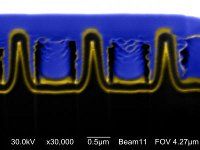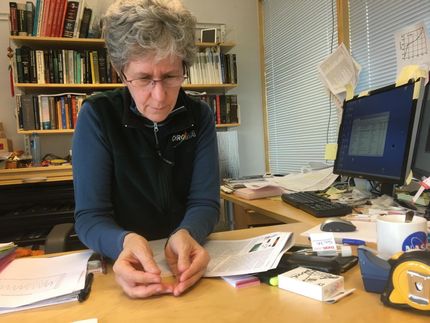Explanation for strange magnetic behavior
Discovery could one day lead to electronic materials that provide both computation and data storage
Advertisement
They're not exactly the peanut butter and jelly of semiconductors, but when you put them together, something magical happens.
Alone, neither lanthanum aluminate nor strontium titanate exhibit any particularly notable properties. But when they are layered together, they become not only conductive, but also magnetic.
In the online edition of Nature Physics, researchers at The Ohio State University report the first-ever theoretical explanation to be offered for this phenomenon since it was discovered in 2004.
Understanding how these two semiconductors interact at their interface could someday lead to a different kind of material—one that provides a single platform for computation and data storage, said Mohit Randeria, co-author of the paper and professor of physics at Ohio State.
"The whole question is, how can you take two materials which do not conduct electricity and do not have magnetic properties, make a sandwich out of them and—lo and behold—at the interface tween them, charge begins to flow and interesting magnetic effects happen?" he said.
"It's like taking two pieces of bread and putting them together and having the sandwich filling magically appear."
By making calculations and modeling the basic physical properties of both materials, Randeria's team has hit upon an explanation for the behavior that seems ironic: the interface between two non-magnetic materials exhibits magnetism.
The team showed how the elemental units of magnetism, called "local moments," are formed at the interface of the two materials. They then showed how these moments interact with the conducting electrons to give rise to a magnetic state in which the moments are arranged in an unusual spiral pattern.
If the physicists' explanation is correct, then perhaps someday, electronic devices could be constructed that exploit the interface between two oxides. Theoretically, such devices would combine the computational abilities of a silicon chip with the magnetic data storage abilities of permanent magnets like iron.
"If you had conduction and magnetism available in the same platform, it could be possible to integrate computer memory with data processing. Maybe different kinds of computation would be possible," Randeria said.
But those applications are a long way off. Right now, the physicists hope that their theoretical explanation for the strange magnetic behavior will enable other researchers to perform experiments and confirm it.






























































